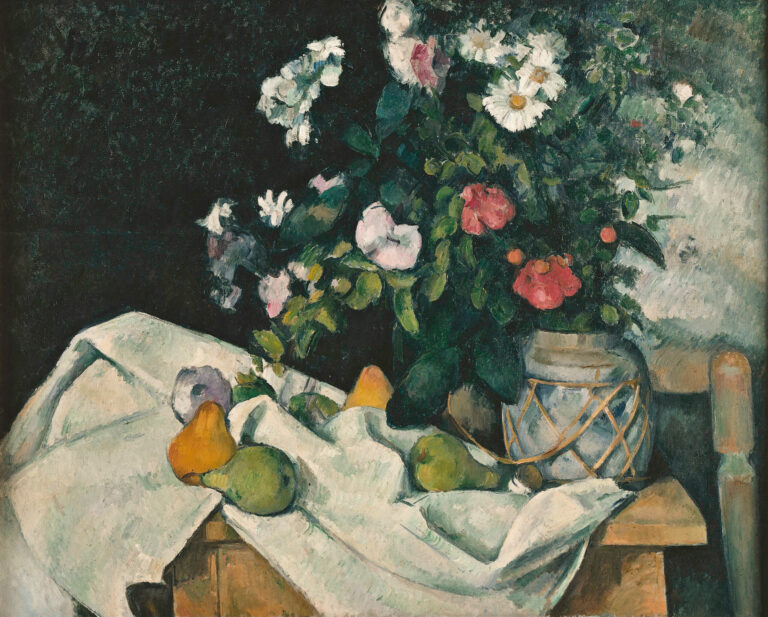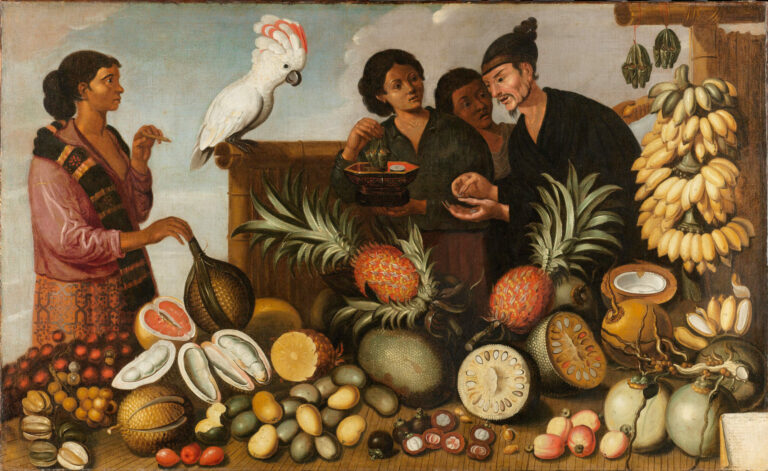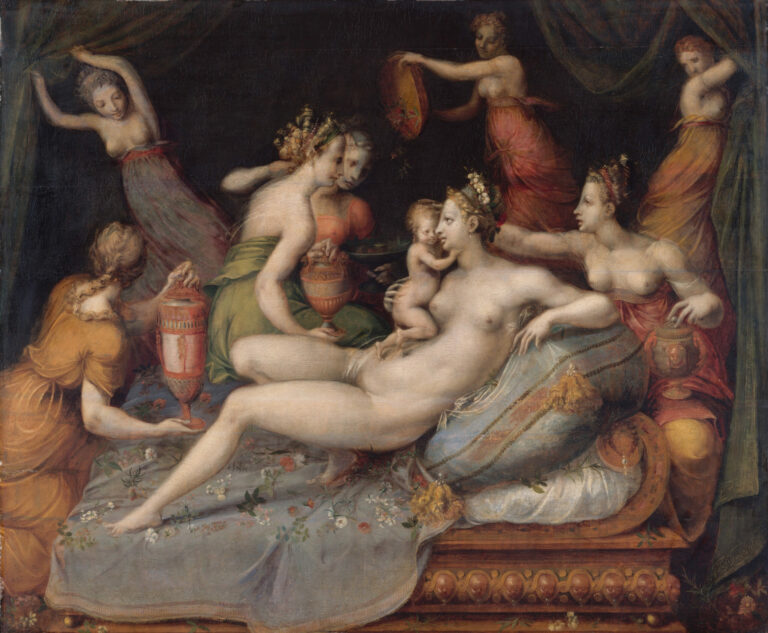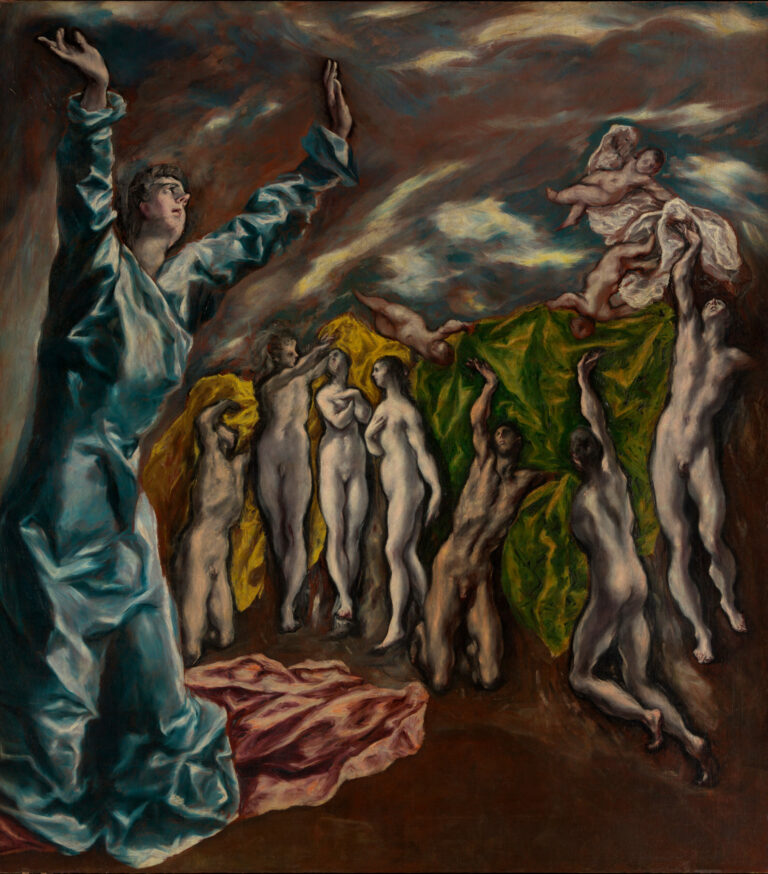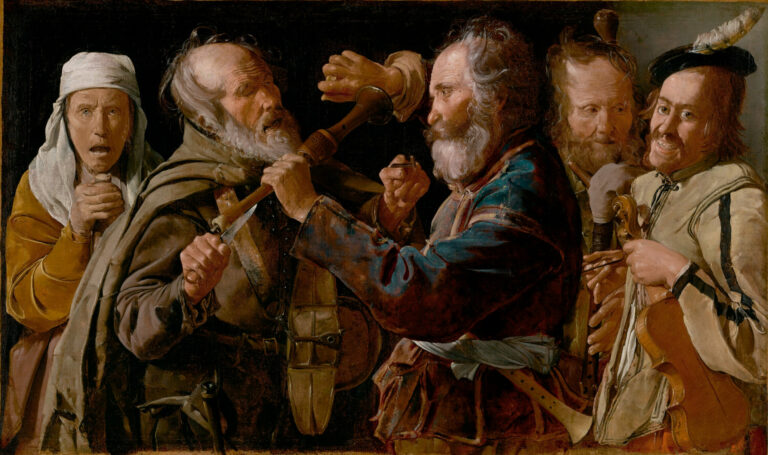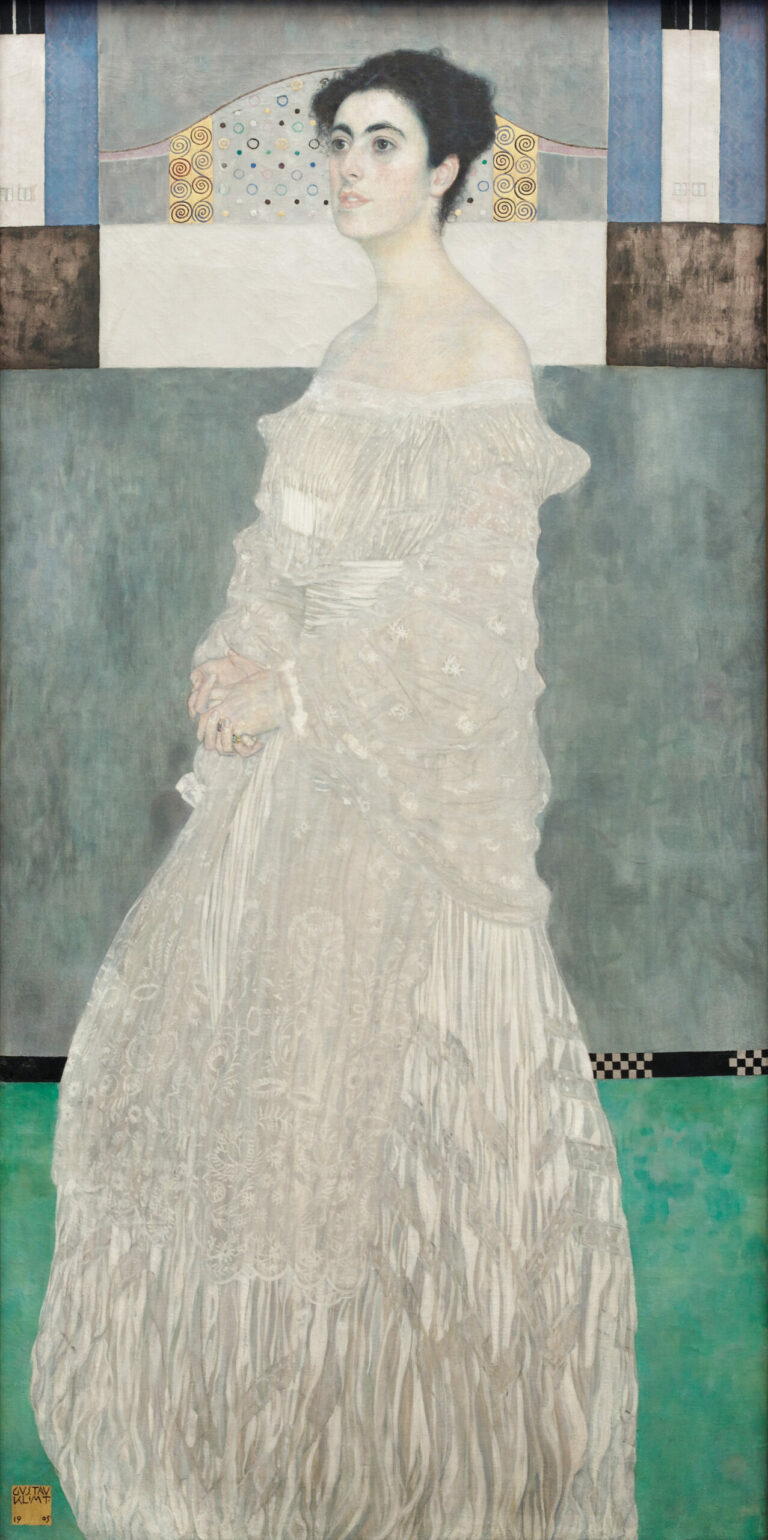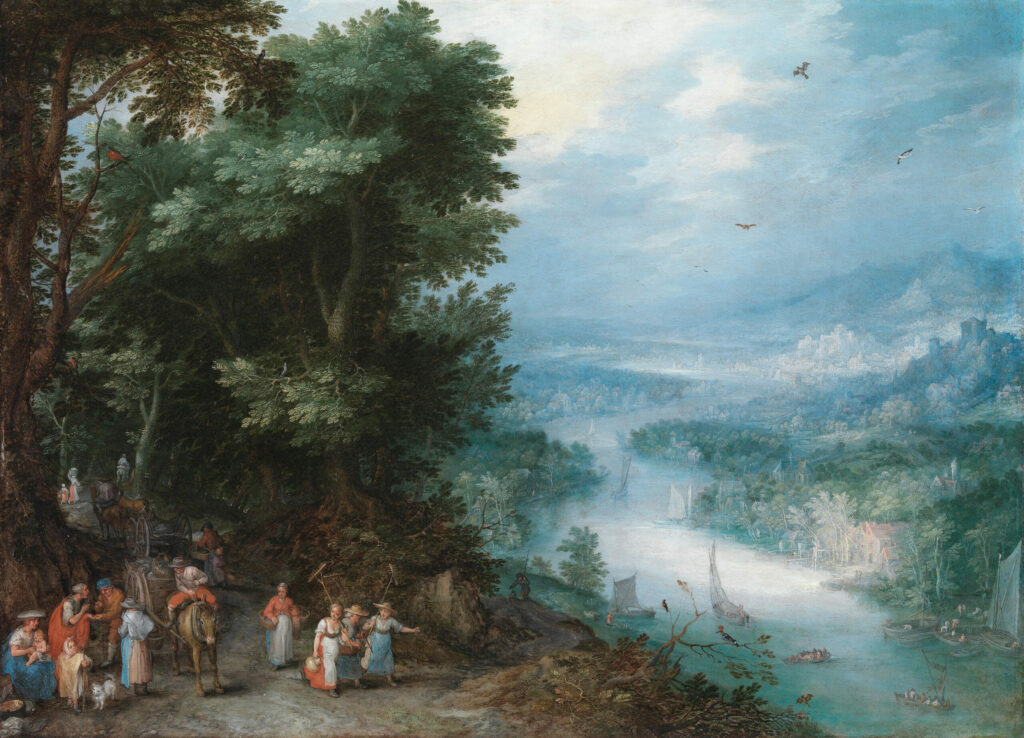
This oil on copper demonstrates Jan Brueghel the Elder’s technical virtuosity in the Flemish landscape genre.
The composition is organized in three planes. In the foreground, a forest path hosts a lively genre scene: peasants, travelers, and merchants converse near a cart. The meticulous rendering of the figures, despite their small scale, attests to the painter’s mastery of miniature art. The middle ground reveals a vast river landscape where a winding waterway is dotted with sailing vessels. The banks are home to villages and farms. The atmospheric perspective gradually asserts itself: the verdant tonalities of the foreground evolve toward more diffused blue-greens. The background dissolves into a luminous haze from which emerge the silhouettes of a fortified city and distant mountains.
Further Information
- Jan Brueghel the Elder, River Landscape, 1602, Bavarian State Painting Collections – State Gallery of Johannisburg Castle, Aschaffenburg
- Oil on copper, 33.3 × 45.8 cm
- https://www.sammlung.pinakothek.de/de/artwork/k2xnN55xPd/jan-brueghel-d-ae/flusslandschaft
Jan Brueghel the Elder (1568–1625), called “Velvet Brueghel” due to the silky fineness of his brushwork, represents the second generation of the Brueghel dynasty. Son of Pieter Brueghel the Elder, he trained in Italy before settling in Antwerp, where he became dean of the Guild of Saint Luke. Court painter to the Archdukes Albert and Isabella, he frequently collaborated with Rubens, notably creating the floral and landscape settings for mythological compositions. A specialist in landscapes, floral still lifes, and allegories, he developed a style characterized by miniaturist precision, a refined palette dominated by greens and blues, and crystalline luminosity. His oeuvre, comprising over 500 paintings, exerted considerable influence on the development of Flemish landscape painting and the cabinet of curiosities. He passed on his expertise to his sons Jan the Younger and Ambrosius.

